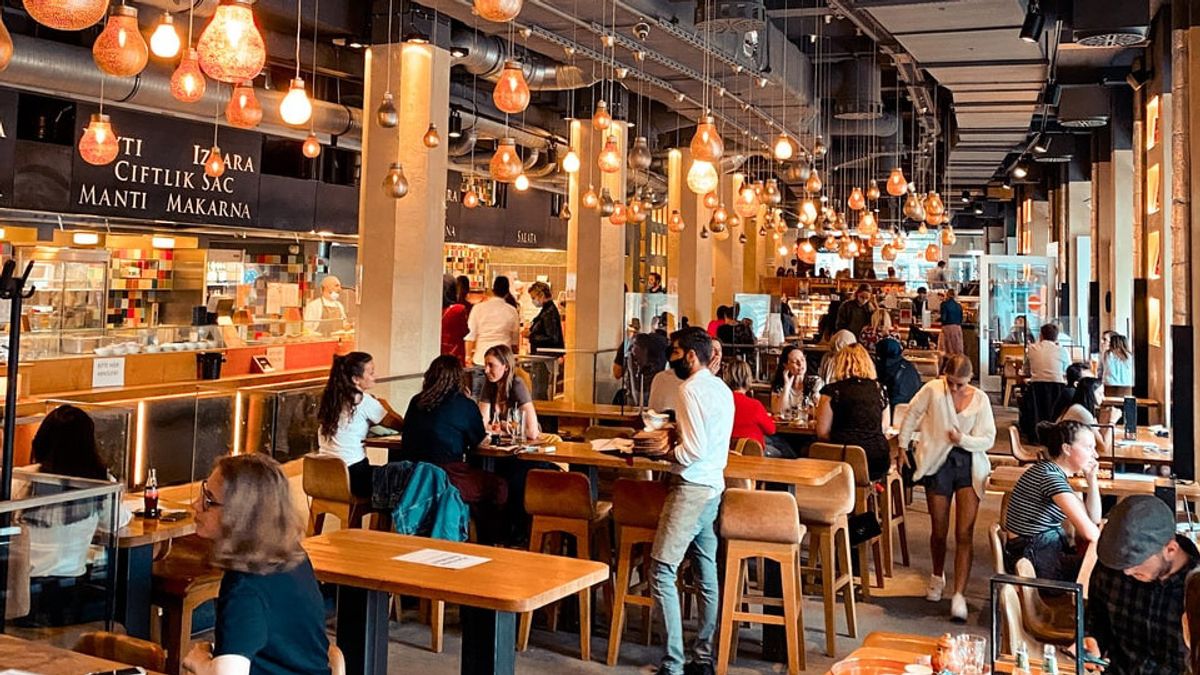
Starting a successful restaurant business from scratch requires careful planning, a clear vision, and the ability to navigate the challenges of the competitive food industry. Below is a step-by-step guide to help you get started:
1. Create a Business Plan
slot bisa depo 5000 A solid business plan is the foundation of your restaurant business. It outlines your goals, strategies, and how you plan to achieve them. Your plan should include:
Concept: Decide on the type of restaurant you want to open (casual, fine dining, fast casual, etc.), the theme, and the kind of cuisine you will serve.
Market Research: Study your target market, competitors, and trends in the food industry. Understand the demand in your location and identify what will make your restaurant unique.
Menu Development: Curate a menu that is not only appealing but also cost-effective. Consider the preparation time, ingredients, and food costs.
Financial Plan: Include startup costs, revenue projections, and profit margins. This should cover the cost of equipment, interior design, staff, and inventory.
2. Secure Financing
Starting a restaurant requires significant capital. The cost can vary depending on location, restaurant size, and concept. Sources of financing include:
Personal Savings: Using your own savings is the most straightforward option.
Loans: Bank loans or SBA loans (Small Business Administration) are another common route.
Investors: You can also seek investment from friends, family, or venture capitalists.
Crowdfunding: Some restaurants opt for crowdfunding campaigns to raise capital.
3. Choose the Right Location
The location of your restaurant plays a crucial role in its success. Factors to consider include:
Foot Traffic: Choose a location with a high level of pedestrian traffic or easy access by car.
Competition: Be aware of other restaurants in the area, especially those serving a similar type of cuisine.
Rent and Lease Terms: Make sure the rent is within your budget and that lease terms are favorable.
4. Design Your Restaurant Layout and Interior
The ambiance of your restaurant sets the tone for the dining experience. Consider the following when designing your space:
Theme and Concept: The design should reflect your restaurant’s theme, whether it’s modern, rustic, or traditional.
Seating Capacity: Ensure that your layout accommodates the number of customers you want to serve.
Flow of Operations: A well-organized kitchen, storage, and dining area are essential for efficiency and customer satisfaction.
Accessibility: Make sure your space is accessible to people with disabilities.
5. Obtain Licenses and Permits
Running a restaurant requires compliance with various regulations. Common licenses and permits include:
Business License: A general business license is required to legally operate.
Food and Alcohol Permits: If you plan to serve alcohol, you will need a liquor license.
Health Department Permit: The local health department will inspect your restaurant to ensure it meets food safety standards.
Signage Permit: In some locations, you may need a permit to display signs outside your restaurant.
6. Hire and Train Staff
The success of your restaurant depends heavily on the quality of your team. Hire staff who align with your restaurant’s vision and can provide excellent customer service. Key positions include:
Chef/Cook: The backbone of any restaurant. Choose someone with experience and a passion for the cuisine you’re serving.
Waitstaff: Friendly and knowledgeable servers are essential to creating a positive dining experience.
Host/Hostess: This person is the first impression of your restaurant, and their role is crucial in setting the tone for the meal.
Cleaning and Maintenance Crew: A clean and hygienic restaurant is essential for maintaining customer satisfaction.
Training is equally important. Make sure staff are familiar with your menu, service procedures, and food safety practices.
7. Develop a Marketing Strategy
Effective marketing is essential to getting your restaurant noticed. Here’s how to build an effective strategy:
Branding: Create a memorable brand that resonates with your target audience. This includes your logo, restaurant design, and the overall experience you want to provide.
Social Media: Utilize platforms like Instagram, Facebook, and Twitter to showcase your food, share customer reviews, and promote specials. High-quality food photos are key.
Local Advertising: Consider traditional advertising like flyers, local magazine ads, and partnerships with nearby businesses to increase visibility.
Online Presence: Set up a website with an online menu, location information, and contact details. Consider listing your restaurant on platforms like Yelp and Google My Business.
8. Launch with a Soft Opening
Before your grand opening, host a soft opening to iron out any operational kinks. Invite friends, family, or a select group of customers to test your menu, service, and overall experience. This will allow you to make adjustments before you open to the general public.
9. Focus on Customer Experience
Customer satisfaction should be a top priority. Provide a welcoming atmosphere, attentive service, and consistently high-quality food. Listen to feedback from your customers and make improvements where necessary.
Loyalty Programs: Consider offering a loyalty program to encourage repeat customers.
Special Events: Host events like wine tastings, live music, or cooking classes to engage your community.
10. Monitor Financials and Adjust as Needed
Once your restaurant is open, keep a close eye on your finances to ensure profitability. Monitor sales, food costs, labor costs, and other expenses. Use financial software to help track and analyze your performance. Regularly review your menu, pricing, and staffing to make adjustments as needed.
11. Consistency and Adaptability
The restaurant industry can be volatile, and success doesn’t come overnight. Stay consistent in delivering great food and service, but also be adaptable to changing trends, customer preferences, and unforeseen circumstances. Continuous innovation and improvement are essential to long-term success.
Conclusion
Starting a restaurant from scratch is a challenging yet rewarding venture. By planning thoroughly, securing proper financing, choosing the right location, hiring a great team, and focusing on the customer experience, you’ll be on your way to building a successful business. Be prepared to work hard, adapt to change, and stay passionate about providing delicious food and excellent service.
Comments on “How to Start a Successful Restaurant Business from Scratch”